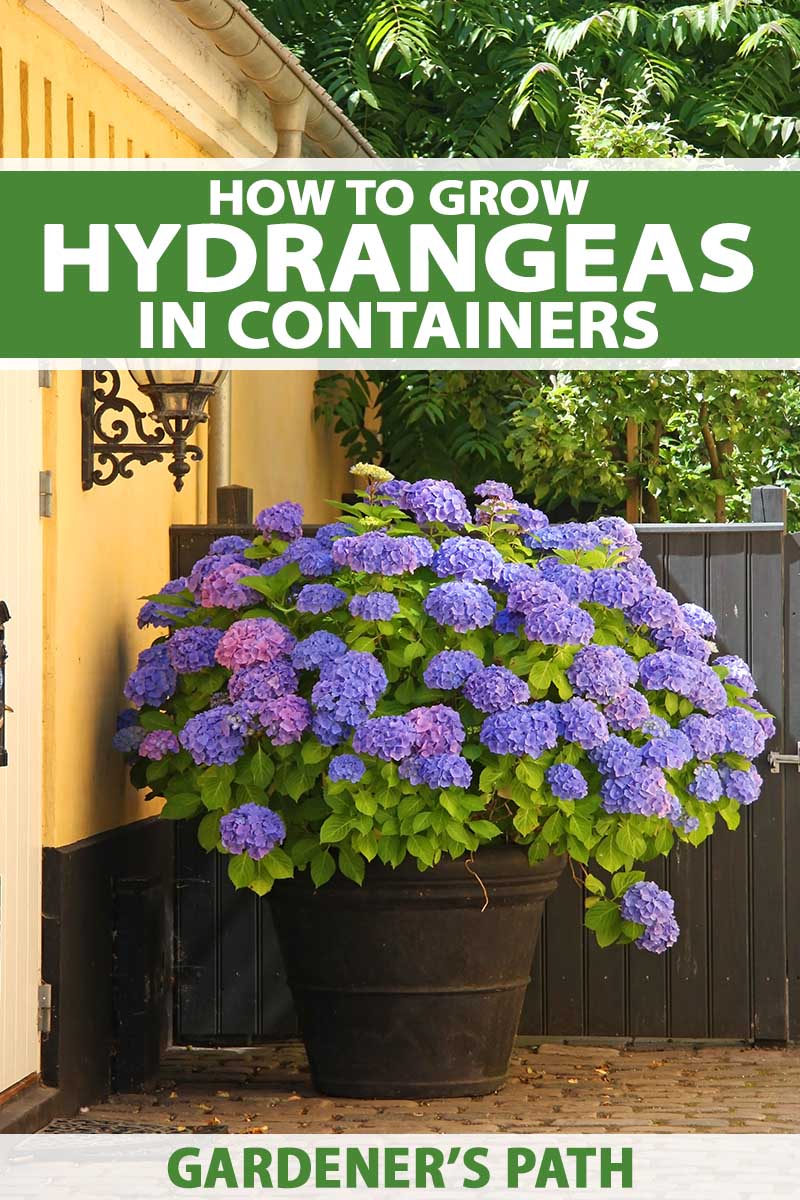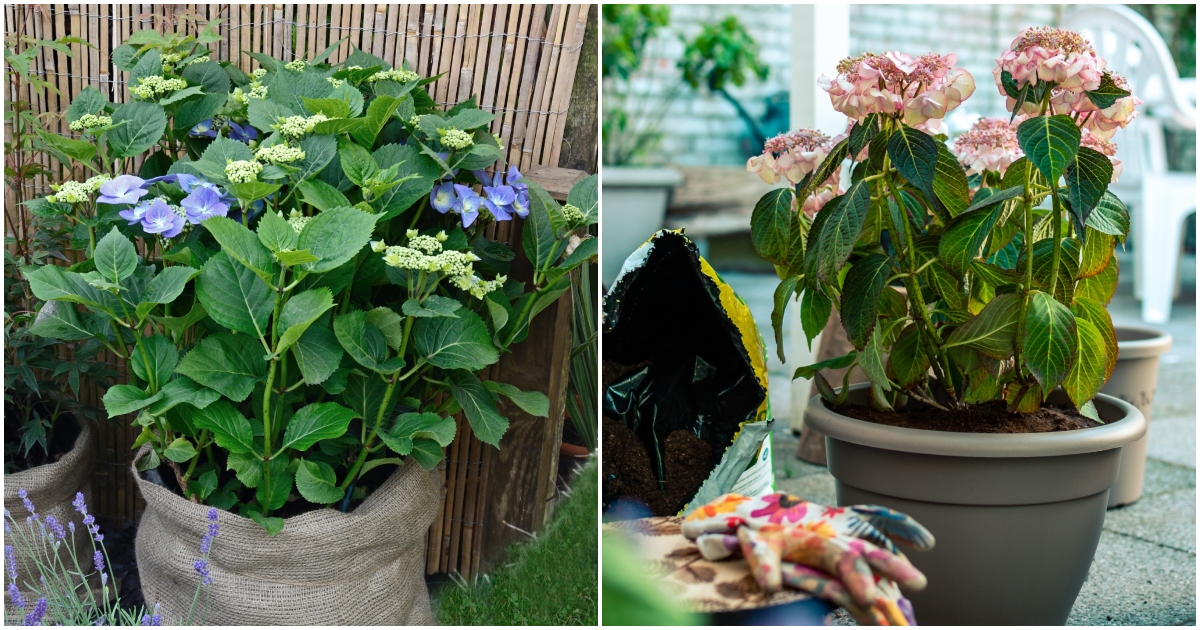How To Keep Your Hydrangeas In Pots Blooming
How to Keep Your Hydrangeas in Pots Blooming
Hydrangeas are beautiful, versatile plants that can add a touch of elegance to any garden. They are also relatively easy to care for, making them a good choice for even novice gardeners. However, if you want your hydrangeas to bloom their best, there are a few things you need to do.
In this blog post, we will discuss the best practices for keeping hydrangeas in pots blooming. We will cover everything from choosing the right pot to watering and fertilizing your plants. By following these tips, you can enjoy beautiful hydrangea blooms for years to come.
Choosing the Right Pot
The first step to keeping your hydrangeas blooming is choosing the right pot. The pot should be large enough to accommodate the roots of the plant, but not so large that it becomes too heavy. A good rule of thumb is to choose a pot that is one size larger than the plant's current pot.
The pot should also have drainage holes to prevent the roots from sitting in water. If your pot does not have drainage holes, you can drill them yourself.
Soil
The soil you use for your hydrangeas is also important. The soil should be well-draining and rich in organic matter. You can buy a commercial potting mix specifically for hydrangeas, or you can make your own by mixing equal parts peat moss, perlite, and compost.
Watering
Hydrangeas need regular watering, especially during the hot summer months. Water your plants when the top inch of soil is dry. If you live in a hot, dry climate, you may need to water your hydrangeas daily.
Fertilizing
Hydrangeas need to be fertilized regularly to produce their best blooms. You can fertilize your plants with a balanced fertilizer, such as a 10-10-10 fertilizer. Fertilize your hydrangeas in the spring and summer, and then stop fertilizing in the fall.
Pruning
Pruning hydrangeas is important for keeping them healthy and blooming well. You should prune your hydrangeas in the spring, before new growth begins. There are two main types of hydrangeas: those that bloom on old wood and those that bloom on new wood.
Hydrangeas that bloom on old wood should be pruned in the spring to remove any dead or damaged branches. You should also thin out the plant by removing any branches that are crossing or rubbing against each other.
Hydrangeas that bloom on new wood should be pruned more heavily in the spring. You can remove up to one-third of the plant's old growth. This will encourage new growth and more flowers.
Sunlight
Hydrangeas need full sun or partial shade to bloom their best. If you live in a hot climate, you may want to plant your hydrangeas in a location that gets some afternoon shade.
Diseases and Pests
Hydrangeas are relatively resistant to diseases and pests. However, they can be susceptible to powdery mildew and aphids. If you see any signs of disease or pests, treat your plants immediately with an appropriate fungicide or pesticide.
Conclusion
By following these tips, you can keep your hydrangeas in pots blooming for years to come. With a little care and attention, these beautiful plants will add a touch of elegance to your garden.
Hydrangeas are beautiful flowers that can add a touch of elegance to any garden. But if you want your hydrangeas to thrive, it's important to feed them properly. If you're growing hydrangeas in pots, you'll need to fertilize them more often than if they were planted in the ground.
There are a few different ways to feed hydrangeas in pots. You can use a slow-release fertilizer, a liquid fertilizer, or even compost. But no matter which method you choose, it's important to fertilize your hydrangeas during the growing season.
If you're not sure how to feed your hydrangeas, or if you want more information about the different types of fertilizer available, I recommend visiting . This website has a wealth of information about hydrangeas, including a section on feeding hydrangeas in pots.
FAQ of feeding hydrangeas in pots
Q: How often should I feed my hydrangeas in pots?
A: Hydrangeas in pots need to be fed more often than those planted in the ground. A good rule of thumb is to feed them every 4-6 weeks during the growing season (spring and summer). You can use a balanced fertilizer, such as a 10-10-10 fertilizer, or a fertilizer specifically designed for hydrangeas.
Q: What kind of fertilizer should I use for hydrangeas in pots?
A: As mentioned above, you can use a balanced fertilizer or a fertilizer specifically designed for hydrangeas. If you use a balanced fertilizer, make sure that it contains phosphorus and potassium, as these nutrients are essential for healthy hydrangea growth. You can also use a fertilizer that contains iron, as this nutrient can help to improve the blue color of hydrangeas.
Q: How much fertilizer should I use for hydrangeas in pots?
A: The amount of fertilizer you need to use will depend on the size of your pot and the type of fertilizer you are using. Follow the directions on the fertilizer label to determine the correct amount.
Q: When should I stop feeding my hydrangeas in pots?
A: You should stop feeding your hydrangeas in pots in the fall, when the growing season is over. This will help to prevent the roots from burning.
Q: What are some signs that my hydrangeas in pots need to be fed?
A: Some signs that your hydrangeas in pots need to be fed include:
- Slow growth
- Pale leaves
- Small flowers
- Yellowing leaves
If you see any of these signs, it is a good idea to fertilize your hydrangeas.
Image of feeding hydrangeas in pots
5 different images of "feeding hydrangeas in pots" from Pinterest:
- A close-up image of a hydrangea plant in a pot, with a woman's hand sprinkling fertilizer around the base of the plant.

- A wider image of a hydrangea plant in a pot, with a man pouring fertilizer into the soil around the plant.

- A collage of images showing different ways to feed hydrangeas in pots, including using a liquid fertilizer, a slow-release fertilizer, and a compost tea.

- A diagram of the different parts of a hydrangea plant, with labels indicating where to apply fertilizer.

- A photo of a healthy hydrangea plant with large, colorful blooms, with the caption "This hydrangea is thriving thanks to regular feeding."

Post a Comment for "How To Keep Your Hydrangeas In Pots Blooming"